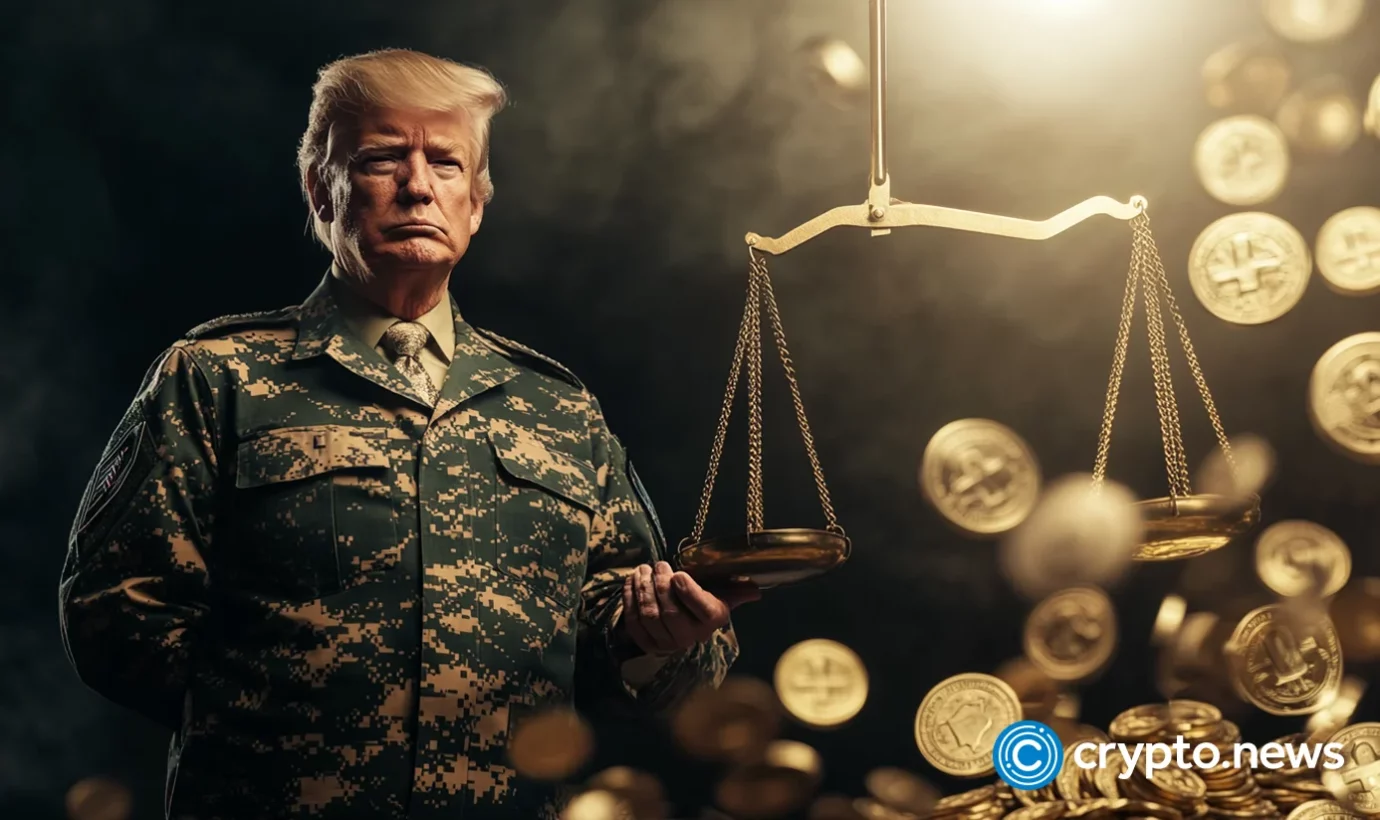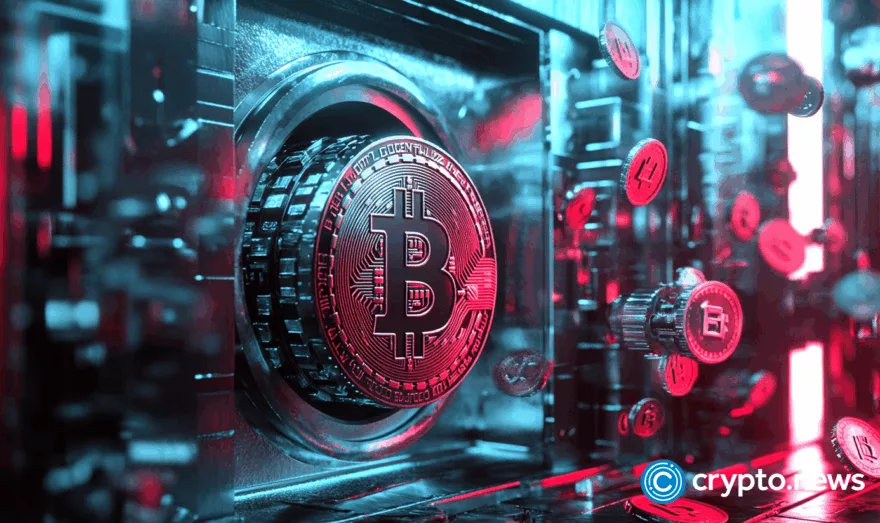Trump bends and bullies all who resist him — sparing only crypto, but for how long?

Trump’s confrontations have unsettled markets and governance worldwide. Crypto has so far been spared, but its protection rests on a shifting political balance.
- Trump dismissed Fed Governor Lisa Cook on Aug. 26 and has repeatedly threatened Chair Jerome Powell, testing the legal limits of central bank independence.
- Tesla, SpaceX, major broadcasters, and universities have faced funding freezes, subsidy cuts, and license reviews after high-profile clashes with the White House.
- Abroad, new tariffs on India, Europe, Mexico, and China have unsettled trade ties, prompting retaliation threats and renewed concerns over supply chain disruption.
- Trump-linked crypto ventures, including World Liberty Financial, TRUMP tokens, and a $6.4 billion CRO plan, have delivered major profits.
- Bitcoin and Ethereum remain closely tied to US liquidity conditions, rising on expectations of rate cuts but falling whenever policy uncertainty deepens.
Table of Contents
Fed independence on trial as Trump escalates pressure
On Aug. 26, Federal Reserve Governor Lisa Cook said she would not be “bullied into resigning” after President Donald Trump announced her dismissal over alleged mortgage fraud violations.
Experts immediately noted that the move was unprecedented. Fed governors serve fourteen-year terms and can only be removed “for cause,” a standard that has never been tested in court.
Cook’s defiance has now set up a legal confrontation that could reshape the balance between the White House and the central bank.
Jerome Powell, the Fed Chair whose term runs until 2026, has faced similar pressure. Throughout the summer, Trump had repeatedly threatened to fire him, calling Powell an obstacle to faster growth and accusing him of being too slow to cut interest rates.
While most analysts agree that a sitting chair cannot be removed without cause, the persistence of these threats has unsettled markets.
Each time Trump has raised the possibility, Treasury yields have moved higher and the dollar has weakened, showing investor concern that the Fed’s independence could be at risk.
Meanwhile, crypto markets remain closely tied to U.S. liquidity conditions. When interest rates fall, risk assets rise, and Bitcoin (BTC) and Ethereum (ETH) have historically outpaced equities in those cycles.
Trump’s pressure on the Fed suggests that easier money could arrive sooner. The danger, however, is that such cuts would not be seen as part of a consistent policy framework.
Instead, they could be taken as political interference, raising the risk of inflation premiums in the bond market and creating a cycle of volatility in which Bitcoin surges on liquidity but then pulls back as investors question the stability of U.S. governance.
Punishment for critics, protection for crypto
Trump’s willingness to pressure opponents has not been confined to the Fed. The same approach has extended to America’s most visible companies, its press institutions, and even its universities.
In June 2025, Elon Musk described Trump’s “Big Beautiful Bill” as a “disgusting abomination.” Within hours, Trump threatened to cancel Tesla’s subsidies and put SpaceX’s federal contracts, worth more than $20 billion across NASA and defense programs, under review.
Tesla’s stock fell 14% that day, wiping out nearly $150 billion in market value. Reuters later confirmed that White House officials had ordered a contract review at SpaceX.
The same tactic was directed at the press. On Aug. 25, Trump urged the Federal Communications Commission to revoke the licenses of ABC and NBC affiliates, accusing them of spreading lies.
Media groups and free expression advocates warned that such rhetoric put the independence of regulatory bodies themselves at risk.
Universities, too, have been pulled in. On Jan. 27, the administration ordered a freeze on federal grants and loans, creating chaos until a court struck it down two days later.
In July, Columbia University agreed to pay $200 million to restore most of its suspended funding. Harvard was told that $500 million would be required for reinstatement.
The Department of Homeland Security even suggested restrictions on foreign student visas. Institutions that once considered themselves insulated from direct political bargaining suddenly found themselves caught in it.
This pattern of using contracts, licenses, and funding as pressure points sets up a striking contrast with how Trump has handled crypto. For years, he called Bitcoin a scam and warned that digital assets were dangerous.
Yet during his 2024 campaign, he reversed course, raising money in Bitcoin and Ethereum, meeting with exchange executives, and promising regulatory clarity.
In early 2025, he followed through with a pro-innovation executive order, a new SEC “Crypto 2.0” task force under Hester Peirce, and the GENIUS Act, which created the first federal stablecoin framework.
While Musk, media companies, and universities were punished, crypto was elevated.
Crypto has not been spared because Trump suddenly believes in its future. It has been spared because it currently serves his political, financial, and rhetorical interests.
For instance, his media company, Trump Media & Technology Group, recently launched Trump Media Group CRO Strategy, a crypto treasury vehicle created with Crypto.com and Yorkville Acquisition Corp.
The plan aims to acquire Cronos (CRO) tokens valued at roughly $6.4 billion, funded through $1 billion in CRO, a $5 billion credit line, and additional cash and warrants.
It also includes integrating CRO into platforms like Truth Social, with Trump Media committing to purchase about $105 million in CRO, while Crypto.com invests $50 million in Trump Media stock.
Separately, his family’s crypto venture, World Liberty Financial, has become highly lucrative. The family holds a 60% stake in WLF, entitling them to 75% of proceeds from token sales.
The venture has raised more than $550 million by selling its governance token, WLFI, and as of mid-2025, the Trump family had realized an estimated profit of over $412.5 million.
Another key asset is the Official Trump (TRUMP) memecoin, launched on the Solana (SOL) blockchain just days before his inauguration, a clear overlap of personal business and political office.
Out of the 1 billion TRUMP tokens created, 800 million remain controlled by two Trump-owned entities, CIC Digital LLC and Fight Fight Fight LLC, while 200 million were released via an ICO on Jan. 17.
Its market value surged almost instantly, climbing into the billions and generating estimated early token sales and trading fees of $350 million, with even greater potential value still controlled behind the scenes.
Trump’s shield could become his weakest flank
Trump’s use of pressure has extended well beyond domestic institutions. Foreign governments have also been drawn into direct confrontation through trade policy.
In April 2025, the White House introduced a “reciprocal tariff” regime, setting a 10% baseline levy on imports and warning of higher surcharges for countries judged noncompliant.
Recently, India saw its duties raised from 25% to 50%, with the White House linking the measure directly to Delhi’s continued imports of discounted Russian oil.
More than half of India’s $87 billion in annual exports to the U.S. are now covered by the higher rate, according to trade ministry estimates. Indian officials described the move as coercive and vowed to fight back.
Europe and Mexico faced similar treatment. In July, Trump threatened a 30% tariff on EU and Mexican imports unless concessions were made.
Brussels rejected U.S. claims that European digital rules unfairly penalized American firms, while Mexico warned that the tariffs could disrupt integrated supply chains globally.
China was given perhaps the most aggressive warning. On Aug. 25, Trump threatened a 200% tariff on rare earth magnets, a critical input for defense and electronics industries, unless Beijing guaranteed continued supply.
The comments came just days after China tightened export quotas, raising alarm over global dependence on its rare earth sector.
These confrontations are reshaping capital flows and the balance of global monetary influence, which is where crypto begins to intersect.
The IMF’s mid-2025 Crypto Asset Monitor put the total stablecoin market above $230 billion, with Tether (USDT) and USD Coin (USDC) accounting for nearly all of it.
Stablecoin transaction volumes topped $27 trillion in 2024, underlining their growing role as cross border settlement tools.
Trump has used tariffs to pressure sovereign governments while promoting regulated stablecoins to reinforce U.S. dollar dominance. Yet crypto is no longer a one-way shield.
India, one of the countries most affected by U.S. tariffs, is already a leading market for peer-to-peer stablecoin use.
A 2025 Fortune India report estimated that stablecoins could play a role in the nation’s $130 billion annual remittance economy, particularly as exporters and families look for faster access to dollars.
The Economic Times reported in mid-2025 that industry leaders see a strong case for an Indian rupee stablecoin to speed up digital payments and expand financial inclusion.
Sandeep Nailwal, cofounder of Polygon (POL), said he was “sure that within months” a rupee-backed token would be launched, though he acknowledged that early efforts would likely face regulatory resistance.
In Europe, the passage of the U.S. GENIUS Act in July, which gave regulated stablecoins federal recognition, prompted EU officials to accelerate digital euro plans.
The Financial Times reported in August that policymakers were even considering deploying the euro on public blockchains to counter U.S. dominance.
In China, Reuters revealed that officials are studying a yuan-backed stablecoin for international use, partly to reduce reliance on dollar-based systems.
Trump is using crypto policy to strengthen his position, but rivals are adopting the same instruments to weaken it. The very tools he has embraced as protection could, over time, become the ones that cut into his advantage.
Rate cuts could fuel a rally
Crypto’s sharp swings in recent weeks show how dependent it has become on policy decisions.
Bitcoin touched a record high of $124,500 on Aug. 14 before sliding back to near $113,000 as of Aug. 28. Ethereum briefly broke $4,950 on Aug. 25 but now trades around $4,600.
All attention is on the Fed’s Sep. 16 and 17 meeting. According to CME FedWatch, markets assign an 88% probability to a quarter-point cut.
A reduction would ease financial conditions and likely support risk assets, while any hesitation could deepen the correction already underway in crypto.
Kaiko’s research shows Bitcoin has become less sensitive to interest rate expectations than smaller tokens, though the broader market still reacts sharply to changes in outlook.
Unless policy steadies, volatility is likely to persist. Trade tensions and monetary uncertainty are already weighing on global markets, and any escalation could intensify the pressure.
That brings the story full circle. Trump has shown a readiness to confront the Fed, corporations, universities, and even allies when they no longer serve his goals. The same approach underpins his trade tactics abroad.
Crypto has so far benefited from this environment, but in a system where support is conditional and pressure is the default tool, there is no guarantee it will remain exempt.
If the industry ceases to strengthen its leverage, it could be treated the same way others have been, rewarded when useful and cast aside when not.














